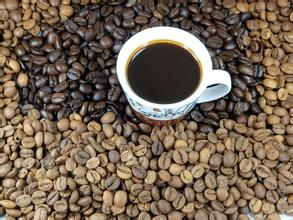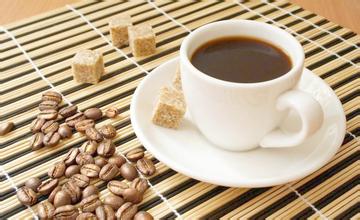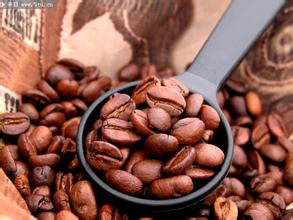Variety Classification and Medicinal value of Coffee Tree
Variety classification
Arabica bean coffee trees can be divided into two main varieties: Arabica (Coffea Arabica)
) and Robsta species (Coffea Robusta/Coffea Canephora). There are also some minor species, such as the Liberian species (Coffea Liberica) and the Alabasta species (Coffea Arabusta), but they are rare on the market.
Robusta beans Robusta coffee trees can grow on flat land, it has a strong resistance to disease, and the yield is higher. Compared with Arabica beans, Robusta beans are more round in appearance, with a slightly inflated side with cracks in the middle, and straight grooves reminiscent of soybeans, while Arabica beans are oval and zigzag, a bit like half a peanut.
Generally speaking, Robusta beans are poor in taste, have 2 to 3 times the caffeine content of Arabica beans, and are cheap, mostly for the large coffee industry to produce instant coffee or low-cost comprehensive products. Arabica coffee trees are suitable for planting on fertile slopes with good drainage at an altitude of about 1000 to 2,000 meters. The climate for growth should not be too humid, but it still requires a continuous rainy season and abundant rainfall.
Medicinal value editor
Main components
1. Small fruit coffee fruit contains alkaloids, the most important of which is caffeine (ooffeine), followed by cocoa.
The fruit begins to ripen
The fruit begins to ripen
Soymarine (theobromine) and theophylline (theo-phylline). The sterols are β-sitosterol (β-sitosterol), stigmasterol (stigi11astero1), rapeseed sterol (campestero1), cholesterol (cholesterol) and trace 5-oat sterol-enol (del5-avenasterol), 7-oat sterol (del7-avenasterol), 7-stigmasterol-enol (Δ 7-stigmasterol). Also contains lipids, in which fatty acids are: nutmeg acid (myristic acid), paulownia acid (palmitic acid), stearic acid (stearic acid), oleic acid (oleic acid), linoleic acid (linoleic acid), peanut acid (arachidic acid). Roots, stems. Leaves and seedlings contain caffeine, theophylline, theophylline, 7-dimethylxanthine (paraxanthine), scopolamine (scope1etin), p-hydroxybenzoic acid (ρ-hydroxybenzoic acid), vanillic acid (vanillic acid), p-coumaric acid (ρ-coumaric acid), ferulic acid (ferulicacid), chlorogenic acid (ch1orogenic acid). Caffeic acid (caffeic acid). Leaves also contain ursolic acid (ursolic acid).
two。 Medium fruit coffee fruit contains alkaloids: caffeine, theobromine, theophylline. Sterols in seed oil
Coffee tree
Coffee tree
The ingredients are: β-sitosterol, 24-methylene cyclopineol (24-methylenecycloartanol), 5-oat sterol-enol and so on. The seeds also contain caffeic acid, ferulic acid, 3-0phaeoyl quinic acid (caffeoylquinic acid) and 5meryl-caffeoylquinic acid (caffeoylquinic acid), 3meme 4-0-3memoylquinic acid (dicaffeoy1quinic acid) and 4maeoylquinic acid (dicaffeoy1quinic acid), 3furol O-feruloylquinic acid (3-0-feruloylquinic acid), 3-0-feruloyl-4furoyl quinic acid (3-O-feruloyl-4-O-caffeoylquinic acid). 3muro-caffeoyl-4muro-ferulaquinic acid (3-O-caffeoyl-4-O-feruloylquinic acid).
3. Big fruit coffee fruit contains caffeic acid. The leaves also contain theacrine,1,3,7,9-tetramethyluric acid (tetramethyluric acid), liber-ine (0 (2), 1meme 9-trimethyluric acid) and methyllibetine (0 (2), 1min7 min9-tetramethyluric acid (O (2), 1min7 min9-tetramethv1uric acid).
Medical function
1. Effect on the central nervous system: caffeine and its structural analogue theophylline are the main active ingredient of coffee.
Coffee tree
Coffee tree
Strong central excitatory effect. But theophylline has a stronger effect and lasts longer than caffeine. People often take caffeine or drink caffeinated drinks.
Now drowsiness is gone, fatigue is reduced, and thinking is quick. With the increase of the dose, the central excitatory effect was more obvious, such as tension, anxiety, restlessness, insomnia, tremor and so on. Higher doses produce local or systemic spasms. The effect of theophylline is stronger than that of caffeine. Methylxanthine compounds such as caffeine and theophylline can increase the sensitivity of respiratory center to CO2. It also has an excitatory effect on the respiratory center, which is more obvious in pathological conditions such as Cheyne-Stoke breathing (Cheyne-Stoke respiration) and apnea in premature infants and in the case of inhibition of respiration with opioids. These compounds can also cause nausea and vomiting, which is partly related to their central role. Taking 85-250mg caffeine can enhance the ability of mental work for long hours and shorten reaction time, but the ability to work involving delicate muscle coordination and accurate timing or arithmetic is reduced. Patients with phobias are particularly sensitive to methylxanthine compounds. In one study, most of these patients showed typical symptoms of anxiety, fear and other phobias when taking caffeine at a plasma concentration of 8 μ g / ml. When the central nervous system is inhibited by drugs, low doses of coffee
Coffee tree
Coffee tree
Methylxanthine compounds such as caffeine can show obvious central excitatory effect. Other data have shown that these compounds can specifically antagonize the effects of opioids including analgesia. Intrathecal injection of caffeine that does not produce hyperalgesia (hyperalgesia) can increase the median effective dose of morphine for pain relief. However, there is no data to show that caffeine can improve brain function during alcoholism. Studies have shown that long-term use of caffeine can lead to tolerance and drug dependence.
two。 Effect on cardiovascular system: methylxanthine compounds such as caffeine and theophylline have obvious effect on circulatory system. But their functions are complex and sometimes contradictory. This largely depends on the state of the body, the dose and whether the drug has been taken before. People who had never used the drug before took caffeine 250-350mg to slightly increase their heart rate, as well as systolic and diastolic blood pressure. However, the above doses often have no effect on people who take caffeine regularly. People who have not taken this kind of compound before take coffee.
Coffee tree
Coffee tree
Whether the increase of heart rate and blood pressure caused by caffeine is related to the increase of catecholamines and plasma renin activity remains to be further studied. It can be considered that for regular users, there is no significant change in the concentration of the above substances in the body. At high doses, both caffeine and theophylline can cause tachycardia. Arrhythmias such as premature contraction may occur in sensitive patients. Excessive consumption of caffeinated drinks can also cause arrhythmias. However, the risk of arrhythmias is small in normal people, and moderate doses of caffeine are usually tolerated in patients with ischemic heart disease or ventricular ectopic (ventricular ectopy). Methylxanthine has a contractile effect on cerebral vessels, resulting in an increase in cerebrovascular resistance, accompanied by a decrease in cerebral blood flow and cerebral oxygen tension.
3. Effect on smooth muscle: methylxanthine compounds can relax all kinds of smooth muscle, the most important of which is the relaxation of tracheal smooth muscle, especially in clinical asthma and experiments.
Coffee tree
Coffee tree
The effect is especially obvious in the case of muscle contraction. Theophylline is the most effective smooth muscle relaxant among these compounds, but its mechanism is still unclear. In addition, these compounds can specifically resist the effects of opioids on gastrointestinal tract.
4. Other effects: caffeine can enhance the working ability of human skeletal muscles and increase the twitching tension of cats that indirectly stimulate the quadriceps. At the therapeutic dose, both caffeine and theophylline can improve the contractility of human diaphragm and reduce diaphragm fatigue. In addition, methylxanthine compounds, especially theophylline, have diuretic effects, which increase the excretion of water and electrolytes similar to thiazines. long-term drinking coffee can increase the concentration of plasma cholesterol, but this is not caused by caffeine. it has something to do with other ingredients in coffee.

Important Notice :
前街咖啡 FrontStreet Coffee has moved to new addredd:
FrontStreet Coffee Address: 315,Donghua East Road,GuangZhou
Tel:020 38364473
- Prev

How did the name of coffee come from?
It starts with the Ethiopian legend of the 5th century AD, when the sheep of the shepherd boy Kadi was so excited after eating a strange red fruit that Kadi and his companions could not help but give it a try, feeling refreshed and weary. Spread ten, ten hundred, this red fruit has since become a part of the local food culture, this red fruit is coffee. After that, coffee was introduced into Arabia.
- Next

Coffee growth trainee introduction to Indonesian coffee
Coffee trees [2] like mild temperatures during the day and less than two hours of direct sunshine, so if coffee trees lack the afternoon showers or thick fog to report every day, local farmers have to plant many taller trees in the coffee garden for shade. At night, they want an environment of about ten degrees Celsius but not too low, because it is too warm
Related
- Does Rose Summer choose Blue, Green or Red? Detailed explanation of Rose Summer Coffee plots and Classification in Panamanian Jade Manor
- What is the difference between the origin, producing area, processing plant, cooperative and manor of coffee beans?
- How fine does the espresso powder fit? how to grind the espresso?
- Sca coffee roasting degree color card coffee roasting degree 8 roasting color values what do you mean?
- The practice of lattes: how to make lattes at home
- Introduction to Indonesian Fine Coffee beans-- Java Coffee producing area of Indonesian Arabica Coffee
- How much will the flavor of light and medium roasted rose summer be expressed? What baking level is rose summer suitable for?
- Introduction to the characteristics of washing, sun-drying or wet-planing coffee commonly used in Mantenin, Indonesia
- Price characteristics of Arabica Coffee Bean Starbucks introduction to Manning Coffee Bean Taste producing area Variety Manor
- What is the authentic Yega flavor? What are the flavor characteristics of the really excellent Yejasuffi coffee beans?

